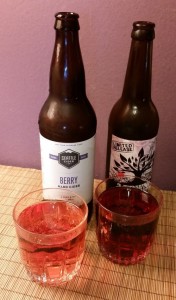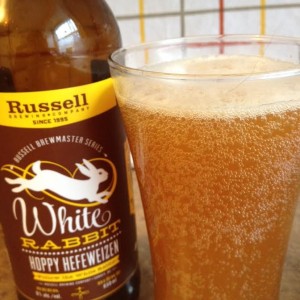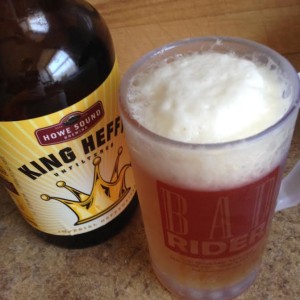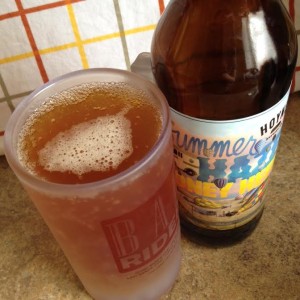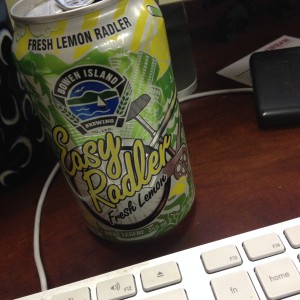With the summer coming in and the weather becoming more reliably nice, I’ve started on my quest to visit local cideries in person, to get a feel for what they’re like beyond just the bottles on the shelf. Bad Rider’s very first road trip report covers three cideries in the Port Townsend area: Alpenfire Cider, Finnriver Farm & Cidery, and Eaglemount Wine and Cider. My road trip companion was my mom, who recently got a new car and has correspondingly called dibs on any and all road tripping that needs to be done for the foreseeable future.
All three of these cideries are out in the boonies, an hour-long ferry ride and another hour of driving from the civilization of my Seattle condo. Each at the end of a dirt road, surrounded by forest and bucolic farmland, quiet and peaceful in the sunshine. Each has a tasting room: Alpenfire’s and Eaglemount’s are open Friday through Sunday 12-5 and Finnriver’s is open daily 12-5.

Our gracious and knowledgable host Melanie
Moving generally north to south, farthest to nearest, we visited Alpenfire first. At the time, they had a 7-cider tasting flight for $5, with ciders, vinegars, jams and jellies also available for sale.
The Alpenfire ciders we tasted were Dungeness, Spark, Ember, Pirate’s Plank, Glow, Calypso, and Smoke, in that order. Our host for the tasting, Melanie, said the first four were offered in order from sweetest to driest, but perhaps their Dungeness of prior years was much sweeter than this year’s, as I would have placed the bottle we tried somewhere between Ember and Pirate’s Plank rather than on the sweet end of the scale.
Glow and Smoke I’ve already reviewed, but it was a pleasure to introduce someone else to them firsthand, and Calypso is an interesting blackberry cider aged in rum barrels — I got the blackberry in the taste, my mom got the rum.
To sum up Alpenfire: traditional and European
The highlight: the exquisite Glow

Finnriver’s barn-red tasting room stands out against the blue sky
Finnriver was the busiest of the three, and they apparently have pizza and live music on Sundays, starting later in the summer. Their tasting was the most bountiful — tragically, I’ve misplaced my notebook with almost all the notes I took from the trip so I’m working entirely off my faulty memory, but I think we must have tried 8-9 of their offerings (artisanal sparkling, golden, black currant, honey meadow, cyser crew select, blackberry apple brandy, raspberry apple brandy). Their normal tasting fee is $5 per person, but Rick at Finnriver was very kind and waived it for us given Bad Rider’s “pro” status (yes, I was charmed).
In addition to ciders, Finnriver offers a number of fruit-based dessert wines and port-style spirited wines. There’s really nowhere to go wrong with Finnriver ciders in general, though I discovered my mom is really not one for meads, cysers, or honey-flavored ciders, and I am really not one for the raspberry dessert wine despite its incredible, ambrosial smell.
To sum up Finnriver: bustling, successful working farm with a wide variety of ciders and apple brandies
The highlight: The pear wine with apple brandy and cacao. Does that not sound amazing? Whatever you’re imagining, it’s better than that.
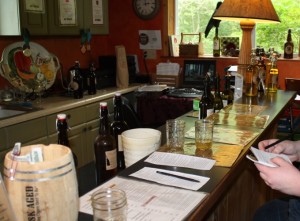
Eaglemount’s tasting room, feat. cider notebook (RIP) in the hands of yours truly.
Eaglemount was the most quiet and withdrawn of the cideries — its narrow access road winding through a stand of trees and tall grasses to an isolated tasting room. It’s smaller than Finnriver’s, technically a bit larger than Alpenfire’s but enclosed in a building where Alpenfire had an open patio area.
Eaglemount had 11 ciders and 5 wines available on their tasting menu when we visited, with a tasting fee of $5 per 5 selections. In addition to cider and wine, they also have some local cheeses for sale.
Having already reviewed their Homestead Semi-Sweet, I went for the Homestead Dry, Cyser, Raspberry Hopped, Apple Mead, and Quince Mead. Everything was interesting, and I got a similar sort of cool, foggy, stony sense from several of them despite the individual variations in flavor. Eaglemount has trees on their homestead from the late 1800s, which makes me think that common thread in the taste of the various ciders is perhaps reflecting the specific terroir of the area.
To sum up Eaglemount: serious cider (and wine) from seriously old trees
The highlight: if you ask my mom, the Syrah, but I think the quince mead and raspeberry hopped were both really interesting (and picked up a bottle of each for a later review)
